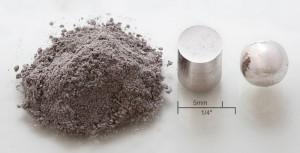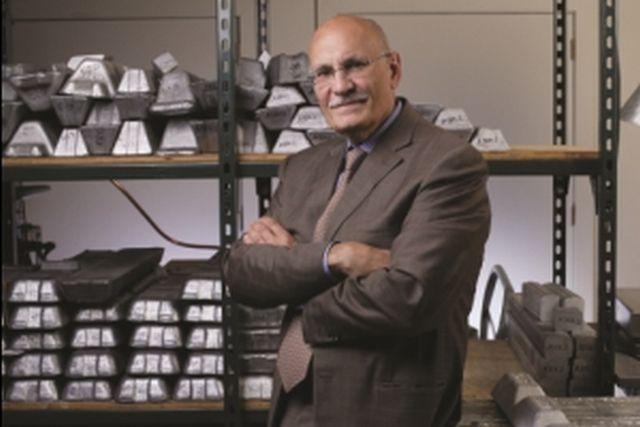Dr. Diran Apelian, a professor of mechanical engineering at Worcester Polytechnic Institute in Massachusetts and director of its Meta l Processing Institute, is heading up work that could revolutionize the process of 3D printing with metal.
l Processing Institute, is heading up work that could revolutionize the process of 3D printing with metal.
 Metals, as we have seen, are very temperamental in additive manufacturing. Powdered metals are the norm so far, as metal 3D printing goes for now; but what if there was something better, that would produce 3D printed products in stronger and longer-lasting forms? Maybe soon, with the help of Dr. Apelian’s research and development efforts, there will be.
Metals, as we have seen, are very temperamental in additive manufacturing. Powdered metals are the norm so far, as metal 3D printing goes for now; but what if there was something better, that would produce 3D printed products in stronger and longer-lasting forms? Maybe soon, with the help of Dr. Apelian’s research and development efforts, there will be.
“There are problems with the powders,” said Dr. Apelian. “This will revolutionize the way we make things.”
“Semi-solid metals” are Dr. Apelian’s focus. He — collaborating with researchers from Massachusetts-based Viridis3D and California’s Lawrence Livermore National Laboratory — is working to develop metals that aren’t quite liquid and aren’t quite solid, which can be used in 3D printing. These gooey metals would, theoretically, replace the metal powders currently used in 3D printing.
Using these newer materials would preclude some of the problems inherent in powdered metals, which contain oxides. The oxides in metal powders are not ideal for use in 3D printing, as they ultimately weaken the printed product in much the same way bubbles will make a dough less structurally sound.
“That’s a very bad thing,” Dr. Apelian said. “It would be like having little pin holes in a glass pane, adding lots of places where the glass could break. The powders for these high-temperature melting alloys are difficult to make and they have a lot of oxides, so it may not be as strong and may lead to failures.”
Oxides can also lead to rusting, which is generally something people want to avoid. In another nail in metal powders’ coffin, they also don’t offer a lot of material variety. “There are only a few alloys that you can get sufficient quantities of,” said James Bredt, a co-founder of Viridis 3D. “It’s a small market. The manufacturers of these metal powders are huge companies making the powders for different industries. Most [powders] don’t really work on these laser [3D printing] machines. They’re not set up to produce stuff of purity as high as you need for a laser sintering process.”
Without a decent variety of materials to choose from, metal powders can’t hope to produce 3D printed metal products with the scope of characteristics ultimately desired. More options of metal materials, such as various superalloys, would allow for more types of end products to be printed up that would eventually be stronger and longer-lasting than those that use metal powders.
But just what kinds of metal products could be made? Why is this such a big deal?
End products 3D printed in a better metal material could include customized, strong components used in medical, automotive, and aerospace industries. Because these industries all have exacting specifications, the performance of any component is obviously critical to ensuring safety across a number of parameters. Superalloys’ high performance capabilities — especially corrosion resistance — make them a great choice for any potential 3D printing applications within these industries.
Further benefits of working with semi-solid metal materials include lower costs of production, which when scaled up could have huge implications. The processing temperatures required for metal powders are relatively high, which can cause a significant uptick in energy costs for production facilities. By taking down the required temperatures (those of semi-solid metals are much lower), manufacturing can maintain high quality at a lower expense.
Granted, there are still some issues to be worked out with an all-new form of material used in 3D printing. “How do you control gooey, mushy metals so you have high precision when you make the deposit?” Dr. Apelian asked. “I have to control the thixotropy or how the flow changes under the application of a force. I have to make sure it’s flowing in a controlled manner.”
All told, Dr. Apelian estimates actual testing of the semi-solid metals will begin in about 1.5 years. Once they figure out the properties of the semi-solid, gooey metal material, they need to work on producing it (how much will it cost to make in larger batches?) and actually using it (how will it handle in a 3D printer?). Once they get that far, steps toward eventual commercialization can really commence.
“We’re not doing any printing yet until we know what we’re doing,” Dr. Apelian noted. “When I understand what’s going on, then I’ll print. I want to know what the issues are and figure it out and then I’ll go work on it. It’s all the prep work ahead of time.”
Discuss the possible implications of such a new material in the ‘3D Printing with Metal Goo‘ forum thread on 3DPB.com.
Subscribe to Our Email Newsletter
Stay up-to-date on all the latest news from the 3D printing industry and receive information and offers from third party vendors.
You May Also Like
Profiling a Construction 3D Printing Pioneer: US Army Corps of Engineers’ Megan Kreiger
The world of construction 3D printing is still so new that the true experts can probably be counted on two hands. Among them is Megan Kreiger, Portfolio Manager of Additive...
US Army Corps of Engineers Taps Lincoln Electric & Eaton for Largest 3D Printed US Civil Works Part
The Soo Locks sit on the US-Canadian border, enabling maritime travel between Lake Superior and Lake Huron, from which ships can reach the rest of the Great Lakes. Crafts carrying...
Construction 3D Printing CEO Reflects on Being Female in Construction
Natalie Wadley, CEO of ChangeMaker3D, could hear the words of her daughter sitting next to her resounding in her head. “Mum, MUM, you’ve won!” Wadley had just won the prestigious...
1Print to Commercialize 3D Printed Coastal Resilience Solutions
1Print, a company that specializes in deploying additive construction (AC) for infrastructure projects, has entered an agreement with the University of Miami (UM) to accelerate commercialization of the SEAHIVE shoreline...































